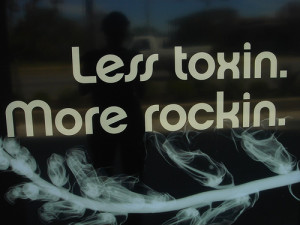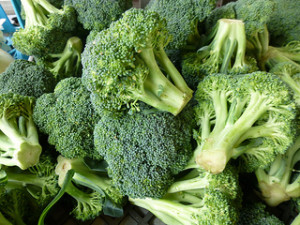Most of you know I’m a Ph.D. student, a fiction writer, a teacher and a single mom, so I don’t post nearly as often as I’d like. I try to keep up with answers to your comments, and I occasionally answer questions on the Trying Low Oxalate Facebook group. Some questions keep coming up, so I’ve decided to keep track of these common questions and re-post my answers here as a resource for everyone. Look for more FAQ posts to come!
 Question: What is oxalate dumping? I keep hearing this term, but I don’t get it.
Question: What is oxalate dumping? I keep hearing this term, but I don’t get it.
Answer: Dumping is what we in the low oxalate community call the oxalate detoxification process. Oxalate is a toxin. If too much gets into the blood stream (often because of poor gut health), then your body desperately tries to get rid of it. Your elimination systems can only process so much at a time, so the rest gets stored away in other parts of your body. Where oxalate is stored is different for each person, but some common places are the joints, the thyroid, old injury sites, the brain, and the skin. Too much stored oxalate is what most likely triggered your oxalate-related symptoms.
When you begin a low oxalate diet, you reduce the amount of oxalate that enters the blood stream. When this level goes low enough to reach your body’s threshold point, it triggers your body to take stored oxalate out of storage and to get rid of it. Yay! You want to get that toxic oxalate out of your body. The problem is that detoxification, or oxalate dumping, can cause a whole host of new symptoms, plus it may increase the severity of your current oxalate-related symptoms. Severe dumping is not fun. But some moderate or low level dumping is good and is needed for your body to heal (note: you might not notice low level dumping symptoms)
The key to surviving dumping is to try to control the rate of your dumping, so that you keep the low level detoxification going, but you don’t let it get so severe that you are crippled by oxalate dumping symptoms. One way to do this is to start slow with the low oxalate diet, especially if you were eating very high oxalate to begin with. Eliminate some high oxalate foods then wait a few days. Then eliminate a few more. Gradually, work your way down to a medium or low oxalate diet. If the dumping gets bad, up your oxalate intake a bit and try to get yourself back into the controlled, low level dumping phase. Oxalate dumping does not sound fun, but dumping is your friend. If you suffer from oxalate-toxicity, then you need to detox the oxalate to heal.
For more information on oxalate dumping, check out this great article over at Ox Vox.
 Question: Why do some vegetables seem to increase in oxalate when cooked, while others seem to decrease in oxalate when cooked?
Question: Why do some vegetables seem to increase in oxalate when cooked, while others seem to decrease in oxalate when cooked?
Answer: Vegetables don’t actually gain oxalate when cooked. They either lose oxalate or their oxalate value remains the same. The key to remember is that the serving size for cooked vegetables in the “Master List” are measured after cooking. Also, remember that most vegetables decrease in volume when cooked, sometimes significantly. You’ll notice on your list that raw broccoli has about 4.2 mg. oxalate per half cup. It takes about 3/4 cup raw broccoli (about 6.5 mg. oxalate) to steam down to 1/2 cup steamed broccoli (about 6.5 mg. oxalate) or to boil down to about 1/2 cup boiled broccoli (about 1.1 mg. oxalate). You’ll notice that steaming and roasting usually don’t decrease oxalate, while boiling often does. So although raw broccoli is considered low oxalate and steamed broccoli is considered medium oxalate, this is just a factor of how we measure oxalate and serving size.
 Question: I have a question about your Banana-Blueberry Shakes. Blueberries are a high oxalate berry. How come this is listed as a low oxalate food? My doctor also told me to be weary of Kale and Broccolli rabe- how do I reconcile this with what is on the web site?
Question: I have a question about your Banana-Blueberry Shakes. Blueberries are a high oxalate berry. How come this is listed as a low oxalate food? My doctor also told me to be weary of Kale and Broccolli rabe- how do I reconcile this with what is on the web site?
Answer: Unfortunately, most high oxalate food lists used by doctors were written ten, twenty or even thirty years ago. They are hopelessly outdated and often misleading in that they don’t consider portion size – just oxalate per 100 grams of the item. All of the oxalate values on this site come from the master list kept by the Autism Oxalate Project and were the most up-to-date value available at the date the post was published. This master list contains all the up-to-date values by the latest testing methods performed in Dr. Michael Liebman’s lab, a food nutritionist from the University of Wyoming (most of the updated testing was funded by the VP Foundation and the Autism Oxalate Project). You may get your own copy of this list by joining the Trying Low Oxalates Yahoo Group or the Trying Low Oxalates Facebook Group (ask someone from the Facebook Group to send it to you.) I can’t publish the list on my website because it contains copyrighted material but it is free to anyone who wants it. (See How to Get a Low Oxlaate Food List).
So good news. You can eat all of the foods you mentioned. Blue berries are low oxalate at about 4 mg. oxalate per half cup. Broccoli Rabe (rapini) is low oxalate at about 2.7 mg. per half cup raw. The oxalate value of kale depends a lot on how its cooked and what variety you are using. The lowest is boiled Dino Kale with the cooking water discarded at 1.8 mg. per half cup.
Photo credits go to Ventura and Mike Litch
{ 5 comments… read them below or add one }